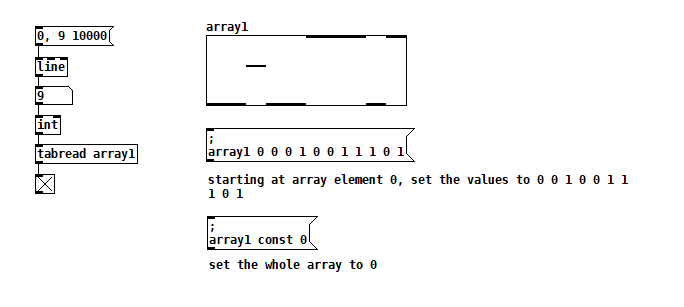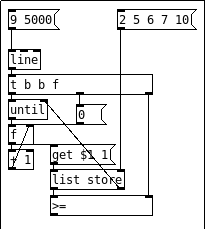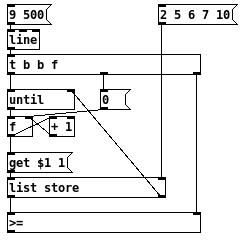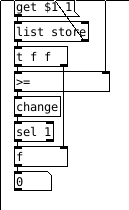@oid said:
@Moothart In this case it does not matter if it is the left or the right inlet and it would work the same. The general convention when something is patched as I did is that the connection does not cross inlets/outlets and is connected to the first it comes to since anything else would be ambiguous. Vast majority of those who patch like this, follow this convention.
Going to the right inlet it loads 0 into the float, than the [until] is banged sending [get 0 1( to [list store], the [until] then bangs until the [list store] gets an out of bounds get which sends a bang out of its right outlet to the left inlet of [until] which stops the [until]. Going to the left inlet the [f ] immediately outputs a zero which sends the [get 0 1( message to [list store], adds 1 to it and sends 1 to the right inlet of [f ], the [until] then starts and sends 1 out giving us [get 1 1(. Only difference between the two is that the [until] will bang one time less if you send [0( to the left inlet than it would if you send it to the right.
Good hint! THX
Is there a chance to see the change of the value in the moment, when the line passes a number of the [2 5 6 7 10]? I hope I get it right here in rebuilding the latest patch.
Maybe there is a chance to build in a number box representing the actual number for so long, until the next number from [line] is passed, being represented in that number box then. The result would be showing adjacent numbers from 2 5 6 7 10, each occuring for a specific amount of time depending on the line object passing that numbers one after another...
 please allow another project related question: How to check for values in an array or list like i.e. (2 4 6 7 9) is true during the run of the [line] object, when it passes particular numbers?
please allow another project related question: How to check for values in an array or list like i.e. (2 4 6 7 9) is true during the run of the [line] object, when it passes particular numbers?







